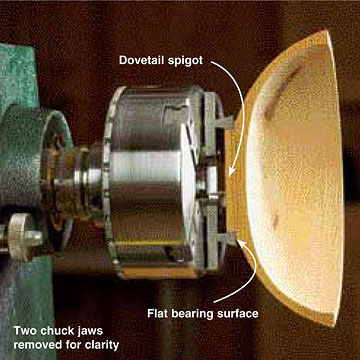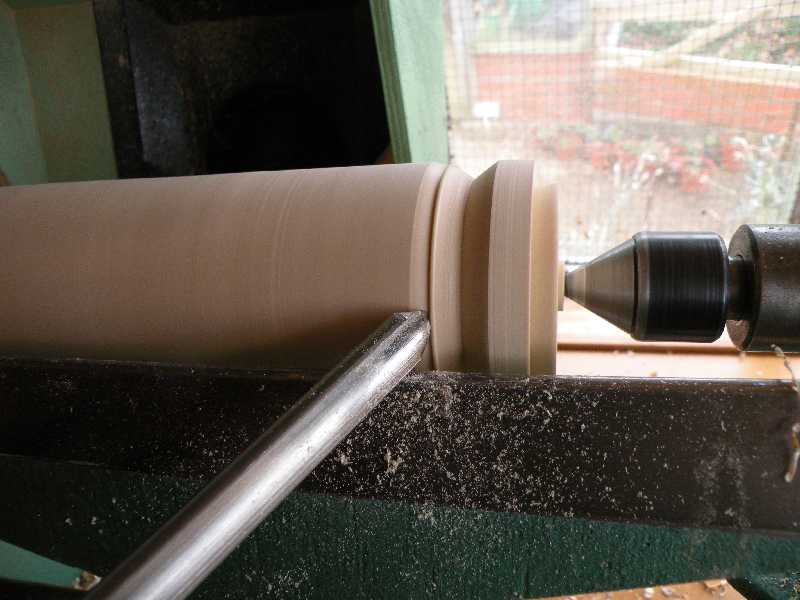trojan62
Established Member
hi all,
hope someone can give me a few pointers about this.
i recentley got rid of my old crappy lathe and bought a new axminster AWVSL 100 lathe and also a clubman 100mm chuck with c dovetail jaws. im quite good on spindle turning , but have not really had a chance to try bowls or goblets and so forth, until i got the scroll chuck.
anyway, i turned my first bowl, which you can see in the pic below, and it didnt turn out too badly, the hollowing seemed to go ok and it came out ok. but ive had real trouble trying to hollow out a goblet as you can see in the pics. i keep getting catches and it seems to take forever to hollow out what i did manage to hollow out, which wasnt much.as you can see the walls of the goblet are totally uneven, why would this be, what did i do wrong here. in one of the pics is the tools i use, the axminster set, which seems pretty good, and 2 pics of the bowl gouge, to show you the bevel, in case this is the thing that is making this hard do do. also. im only using wood at the moment that i can get hold of, leylandi and pine. i realise these might not be the greatest woods to turn. could these be the problem.
anyway, if anyone has some ideas of what im doing wrong , can they give me a few tips.
thanks in advance....
chris....
hope someone can give me a few pointers about this.
i recentley got rid of my old crappy lathe and bought a new axminster AWVSL 100 lathe and also a clubman 100mm chuck with c dovetail jaws. im quite good on spindle turning , but have not really had a chance to try bowls or goblets and so forth, until i got the scroll chuck.
anyway, i turned my first bowl, which you can see in the pic below, and it didnt turn out too badly, the hollowing seemed to go ok and it came out ok. but ive had real trouble trying to hollow out a goblet as you can see in the pics. i keep getting catches and it seems to take forever to hollow out what i did manage to hollow out, which wasnt much.as you can see the walls of the goblet are totally uneven, why would this be, what did i do wrong here. in one of the pics is the tools i use, the axminster set, which seems pretty good, and 2 pics of the bowl gouge, to show you the bevel, in case this is the thing that is making this hard do do. also. im only using wood at the moment that i can get hold of, leylandi and pine. i realise these might not be the greatest woods to turn. could these be the problem.
anyway, if anyone has some ideas of what im doing wrong , can they give me a few tips.
thanks in advance....
chris....













































